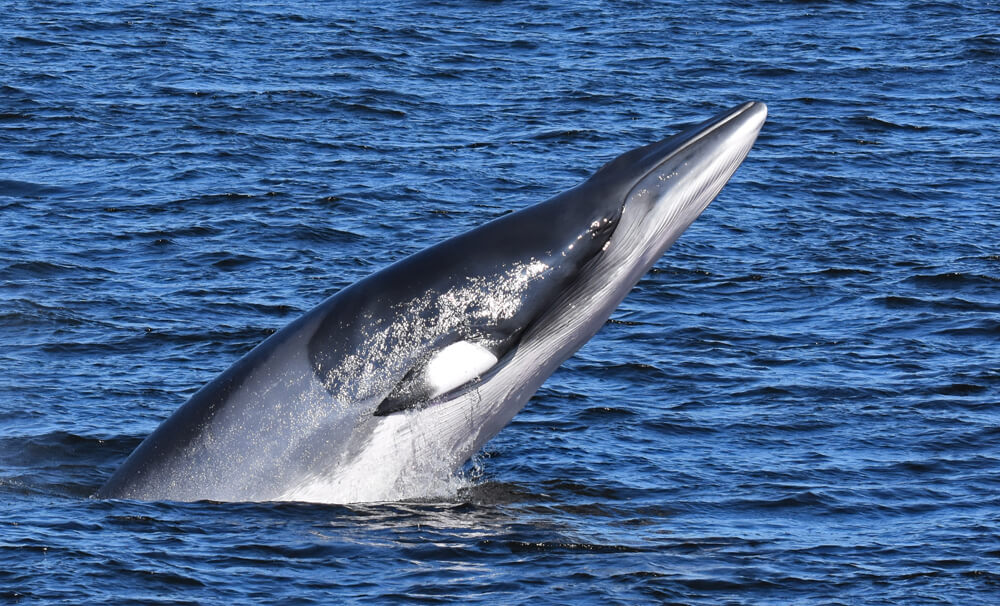From the Gaspé to the Côte-Nord, minke whales have been appearing in the waves in recent days. In the St. Lawrence, the majority of minke whales identified or biopsied are females. In this species, females prefer coastal habitats, while males prefer ocean waters. Due to their hunting habits and their smaller size, female minke whales are therefore commonly observed from shore. In Cap-des-Rosiers in the Gaspé Peninsula, a graphic designer steps away from her computer screen to watch a minke whale pass by in the late afternoon light on May 3.
In Cap-aux-Os, around 20 seals enjoy the last ice in Gaspé Bay. On the other side of the St. Lawrence, on May 3, from the beaches of Sept-Îles, a sports coach photographs a lone seal on the drifting ice. “It was weird: it was literally sitting on the last piece of ice as far as the eye could see.” Later in the week, a minke whale is observed offshore, west of Île du Corossol.
It’s not often that we get news from the Magdalen Islands. On May 5, a humpback whale is observed between the archipelago and the tip of Cape Breton, Nova Scotia.
The same day, in Sainte-Anne-des-Monts in the Gaspé Peninsula, excitement is in the air. One observer finally spots his first whale of the season, after months without seeing a single cetacean. And what an observation it was! Its back glistening in the sunset, the minke whale feeds near shore, actively swimming back and forth.
The same day, near the Pointe-des-Monts lighthouse on the north shore, a GREMM research assistant lingers to admire the landscape. He sees two minke whales heading upstream. Minke whales are usually solitary, but can also occasionally be seen in pairs.
“They’re here! My first sighting of the year!” exclaims a volunteer from the Quebec Marine Mammal Emergency Response Network. On the afternoon of May 7, an hour and a half before high tide, six belugas are swimming off Cap aux Oies, between the towns of Les Éboulements and Saint-Irénée in the Charlevoix region.
In May 2018, the start of the season was quite calm. This year, minke whales are relatively abundant! No fewer than six different minke whales are tallied on May 8 in the Tadoussac area. A fin whale was seen last week, but seems to have left the area. Belugas remain present. In Les Escoumins, minke whales and belugas are seen from the docks.





